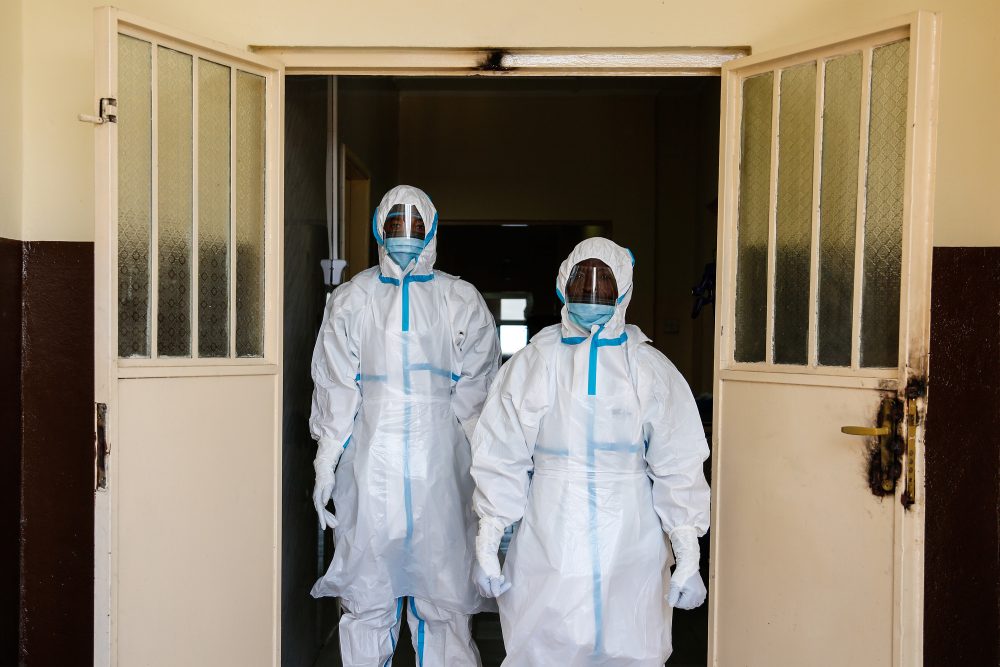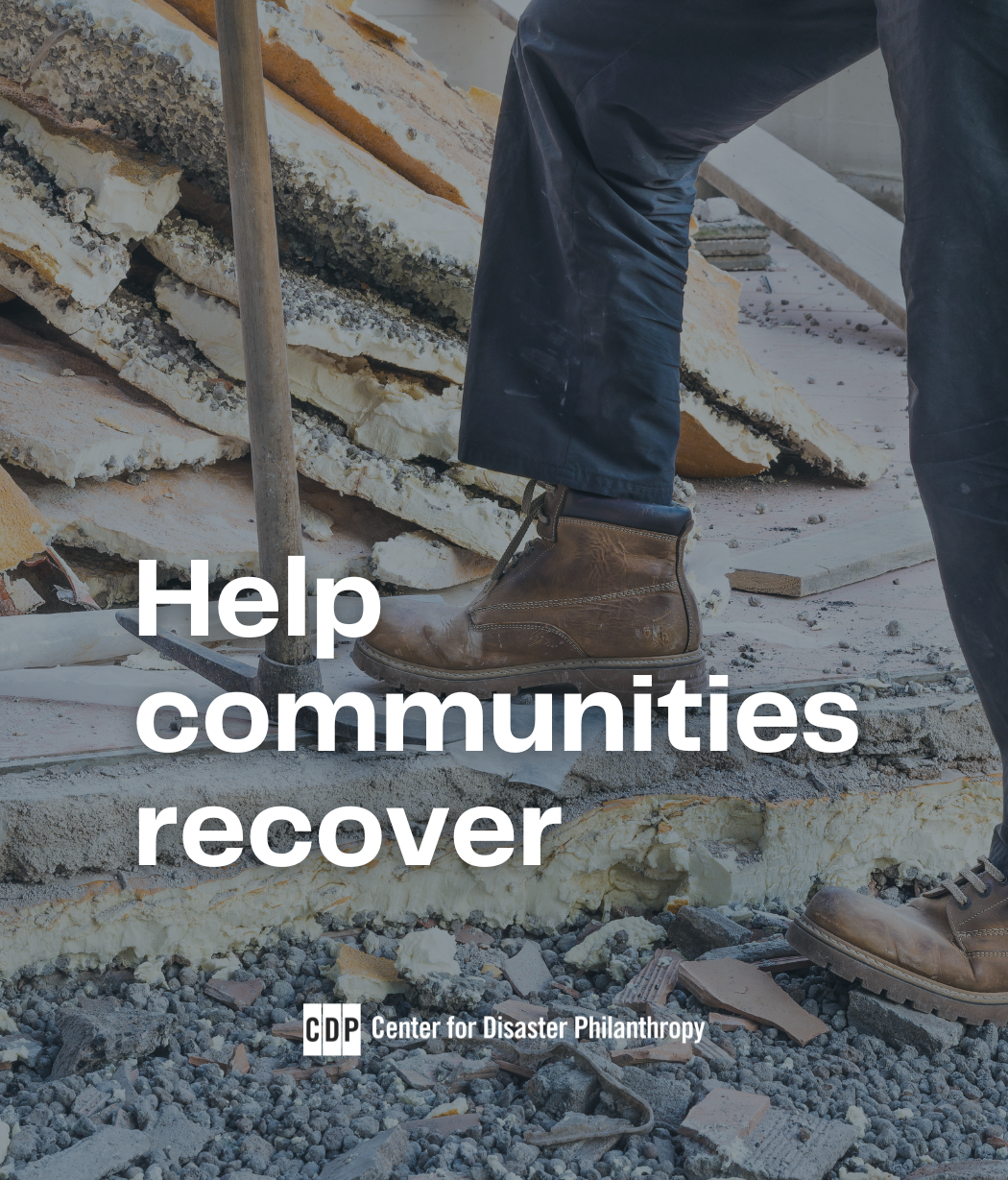 Video
Video
Last updated:
Ebola Outbreak
 Video
Video
Overview
After almost two full years, the world’s 10th outbreak of Ebola was declared over on June 25, 2020.
Officially declared on August 1, 2018, this outbreak saw significant advances in controlling epidemics and in the treatment of Ebola. There was also a significant reduction in the mortality rate thanks in large part to new treatments that became available during the outbreak. The most promising treatment, REGN-EB3, changed the fatality rate from 75 percent to only six percent when the patient received immediate treatment.
(Photo: Felicia, a 29 year old Liberian nurse, prepares to go inside the Ebola patient ward to draw blood from confirmed patients. Source: USAID/Morgana Wingard)
This was the first outbreak in which the concept of “ring vaccination” was widely used. In this vaccination model, rapid contact tracing allowed for those who were close contacts of an infected person to receive targeted vaccinations in the hopes of preventing further transmission. This targeted vaccination process was largely successful in helping to limit transmission when it was used. Three days before this outbreak was originally expected to be declared over, a new case of Ebola was identified on April 10, 2020. This case was quickly by followed the deaths of an 11-month-old infant and a 7-year-old girl who were both treated at the same facility. Subsequently, three more cases were identified, for a total of six new cases – all in the Beni region of the Democratic Republic of Congo (DRC). With quick work by local and regional health officials, this new flareup was limited to only these six cases, allowing this outbreak to officially be declared over.
After the West African outbreak of 2014 killed 11,000 people there was significant concern that this outbreak could turn into a full-fledged pandemic. The response to this epidemic was also hampered by the uncertain security situation in the region. Ongoing conflicts in the area posed a significant risk to health officials attempting to reach people in some parts of the outbreak area.
What was the impact of this outbreak?
One-third of the probable cases occurred before the outbreak was declared in August 2018 and in the majority of the remaining cases, the bodies were buried before they could be tested. Retrospective analysis points to the outbreak beginning in May 2018 when an individual and several members of the family developed hemorrhagic fever and died. The outbreak was declared after a subsequent joint Ministry of Health/WHO investigation found four positive cases on site. In total, there were 3,470 cases, 2,287 deaths and 1,171 survivors.
The Institut National de Recherche Biomédicale (INRB) confirmed by genetic sequencing in early August 2018 that this outbreak was caused by the Zaire ebolavirus species. This is the most dangerous strain of Ebola viruses and the same strain that occurred in the 2014-2016 Ebola outbreak in West Africa.
New treatment and potential cure
In mid-August 2019, the World Health Organization and the Institut National de Recherche Biomedicale (DRC’s National Institute of Health) announced a significant new treatment and potential cure. Beginning in November of 2018, patients at four treatment centers were offered one of four medications: ZMapp, Remdesivir, REGN-EB3 and mAb114. ZMapp was the drug used to battle the Ebola virus in West Africa during the previous outbreak. With no treatment, the mortality rate is over 75 percent. The results from the treatments were astounding, as can be seen in the table below. Because of the significant successes of the test, it was canceled and all patients are now being treated with REGN-EB3 or mAb114. Ebola is no longer an incurable disease.

While the outbreak in North Kivu is over, an unrelated outbreak emerged in the Mdabanka region, about 1,000 miles away.
Support for access to healthcare
Continued support for access to healthcare across the country, along with aid for survivors and families of victims to support their long-term health needs is crucial to ensuring the long-term recovery of those who have been affected by this outbreak. There may be health conditions that were ignored or left untreated by individuals who were afraid of catching Ebola. It is important that full health assessments are done to support underlying or missed conditions, including vaccinations. In some families, loss of income from a deceased family member will be a significant barrier to recovery.
In the official news release declaring this outbreak over, the World Health Organization’s Director General Dr. Tedros Adhanom Ghebreyesus said: “The outbreak took so much from all of us, especially from the people of DRC, but we came out of it with valuable lessons, and valuable tools. The world is now better-equipped to respond to Ebola. A vaccine has been licensed, and effective treatments identified, … We should celebrate this moment, but we must resist complacency. Viruses do not take breaks. Ultimately, the best defence against any outbreak is investing in a stronger health system as the foundation for universal health coverage.”

The Center for Disaster Philanthropy (CDP) has a Global Recovery Fund that provides an opportunity for donors to meet the ongoing and ever-expanding challenges presented by global crises.
Contact CDP
Recovery updates
If you are a responding NGO or a donor, please send updates on how you are working on recovery from this disaster to Tanya Gulliver-Garcia.
Donor recommendations
If you are a donor looking for recommendations on how to help with disaster recovery, please email Regine A. Webster.
We welcome republication of our content. Please credit the Center for Disaster Philanthropy.
Philanthropic and government support
The Bill & Melinda Gates Foundation has been a major supporter of the fight against Ebola with multiple donations to various organizations over the course of this outbreak:
- $4 million to the World Health Organization in 2019 to support new response strategies.
- $900,000 to UNICEF to support emergency relief activities in the DRC.
- $243,490 in 2019 to the University of California, Los Angeles to better understand the antibody profiles of people who have been exposed to Ebola and other viral hemorrhagic fevers, along with over $5 million in donations to many other organizations responding to this outbreak.
The Lions Clubs International Foundation donated $244,068 to Partners in Health to support their work on Ebola.
The Izumi Foundation donated $25,000 to Amani Global Works to aid in combating the Ebola outbreak in the DRC.
InFaith Community Foundation donated $100 to Lutheran World Relief as part of the Doubling Gift program to support work on the Ebola outbreak.
Resources

Pandemics and Infectious Diseases
A pandemic is the sustained transmission of an infectious disease across a wide area of one country or across international borders. Pandemics may be either naturally occurring or the result of human intervention through genetic engineering or biological warfare.

Is your community prepared for a disaster?
Explore the Disaster Playbook
